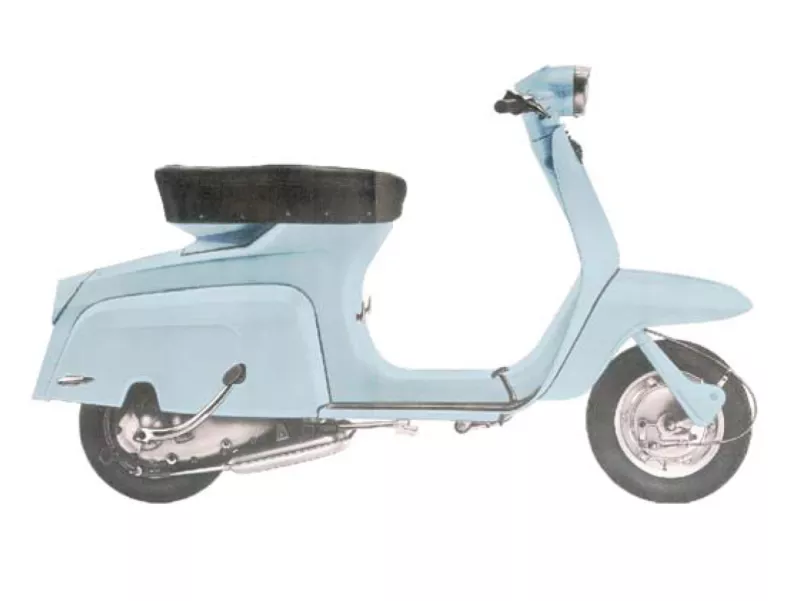very good
4.7 / 5
Shipping today with order in 1 h 4 min
Postage free from 99€ (DE)
High customer satisfaction
Shipping today with order in 1 h 4 min

Lambretta Junior
In 1964, Innocenti launched the Junior series and with it a completely new family of scooters. The simple scooters were intended to attract new groups of buyers at a lower price.
The concept of the vehicles has some similarities with Piaggio vehicles. For example, the chassis is self-supporting and access to the air filter is located under the driver's seat beneath a small plastic tub. The engine, on the other hand, is located centrally in the frame and is clearly based on the design of the Li engines. The cylinder of the Juniors is different. Depending on the model, a seat bench, a single seat or two single seats were installed.
The engine is hidden under side covers, most of which had external locking levers. The rubber parts were completely gray, except for the kickstarter and stand feet, which were also black.
J100/125
The Cento was the first vehicle in the J series. This was a small mistake on Innocenti's part. The market research had made a small mistake, according to which an engine with 98 cc would have the highest sales potential in various markets. This turned out to be wrong and was soon followed by the J125. Both the Cento and the J125 had a double seat, three-speed gearbox and 3.00-10" tires. The Cento produced 4.7 hp and scratched the 80 km/h barrier, while the J125 broke the 80 km/h barrier with 5.8 hp.
By November 1965, 17,642 of the Cento had been built, while 21,651 of the J125 had been built by October 1966.
J125 Starstream
From May 1966, the facelifted J100/125 was marketed as the Starstream. New features included a narrow leg shield, a new seat and the very attractive Stellina lettering with the star. The engine is familiar from the J125, but now has a four-speed gearbox. The paintwork is two-tone. The base coat is set off with either red or blue side hoods and cascade. The side bonnet catches change over time from levers to inside catches.
The Super Starstream was specially designed for the British market. Here, the advantages of the conventional Starstream were joined by a movable mudguard and a very successful cascade.
Thanks to the change to a four-speed gearbox, the Starstream and Super Starstream accelerated quite quickly and reached a top speed of 87 km/h. Production of the Starstream and Super Starstream was stopped in April 1966.
J125 3-speed - 1st version
(September 1964 to December 1964)
Cylindrical holder for the handlebar lock, front fork with screw stops.
J125 3-speed - 2nd version
(January 1965 to September 1966)
Rectangular mounting for the handlebar lock, front fork with stops for plugging in. Simplified side cover locks from January.
J125 4-speed - Star Stream & Super Starstream
(late 1967 to early 1968)
Side covers with DL-style fasteners.



